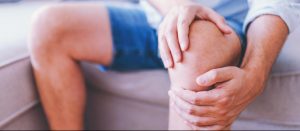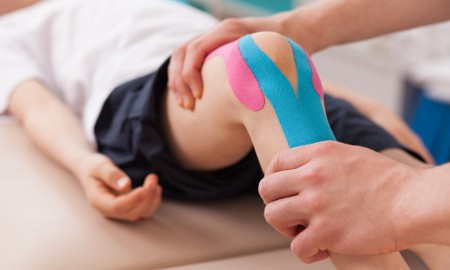What is Osgood Schlatter’s Disease?
Osgood Schlatter’s Disease is a very common problem we see in the early teenage sporting population. It is typified by pain on the front of the knee a little bit below where the knee cap is. It often gradually comes on with no significant trigger, generally worse with running and jumping sports. Sometimes a bump can develop on the spot that is painful.
It is a type of ‘traction apophysitis’ which basically means the growth plate (apophyseal plate) at the top of our leg bone (tibia) is being pulled on excessively and has become inflamed and sore.
How do you get Osgood Schlatter’s?
 Osgood Schlatter’s can only happen while we are growing, as once we are fully matured, the growth plate becomes fused. It generally happens when we aregoing through a growth spurt. Hence, girls tend to get it between 10 and
Osgood Schlatter’s can only happen while we are growing, as once we are fully matured, the growth plate becomes fused. It generally happens when we aregoing through a growth spurt. Hence, girls tend to get it between 10 and
13, while boys a little bit later, often 12-15.
Think of it as the growth of the bones outpacing the muscles. It is one type of pain we can think of as ‘growing pains’.
How can we prevent it?
The best strategy is to try and minimise the following risk factors:
- Avoiding spikes in activity, particularly around growth spurts. The most susceptible children are those who do very high volume of sports eg, soccer 5 days a week. Moving from playing no sport to suddenly multiple nights a week can often be quite challenging on the body.
- Maintaining good flexibility, particularly through the quadriceps.
- Maintenance of lower limb control i.e. how do we position our hips, knees, and feet. Do we collapse and roll in, thereby changing the force through the knee?
For a currently active problem, treatment largely involves amending the above factors, which are likely driving the problem. Often this may mean a temporary reduction in activity to allow for rest. Adjuncts such as taping and footwear modification can assist with offloading the sensitive area. Soft tissue releases and massage can assist with flexibility.
Osgood Schlatter’s is a condition that needs to be monitored and managed. Eventually symptoms will resolve on their own as the body slows down growing. But if sport is to be continued throughout this process, it is essential the condition is treated and managed.
If you think this applies to you, please give us a call.
Book Now
